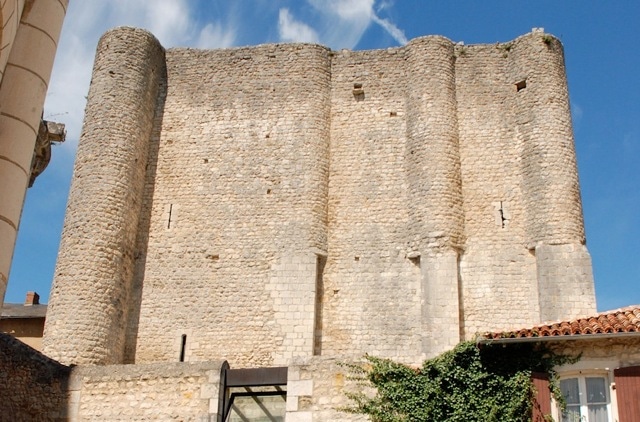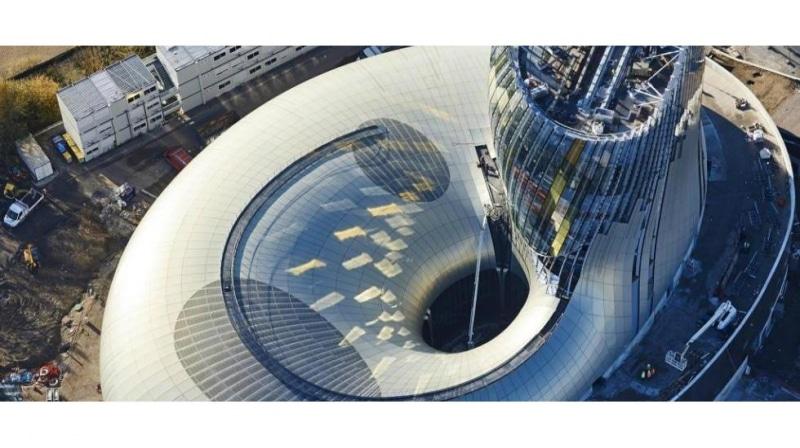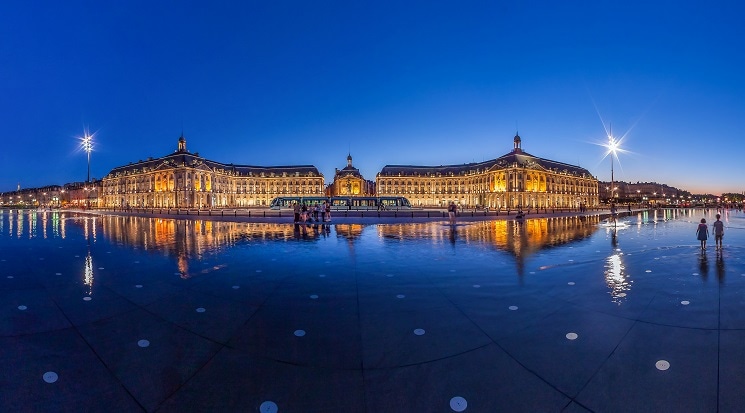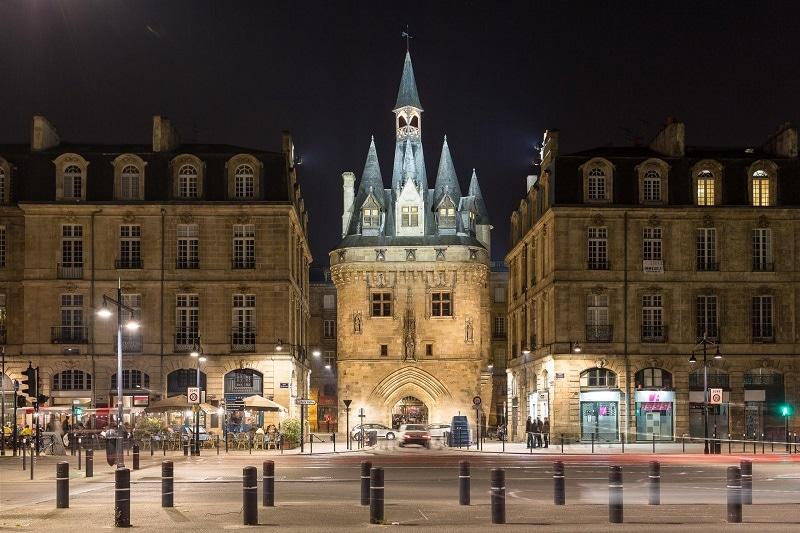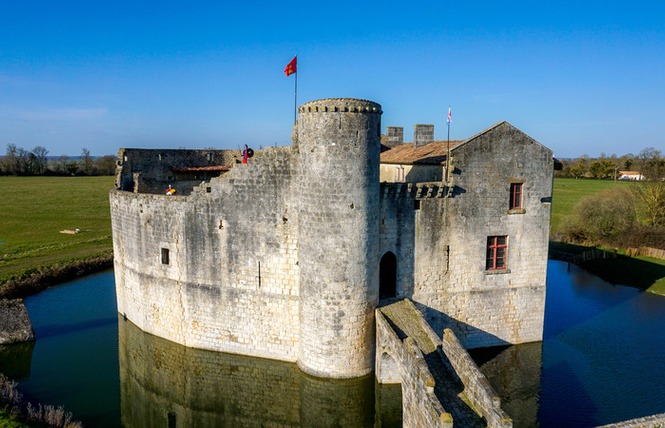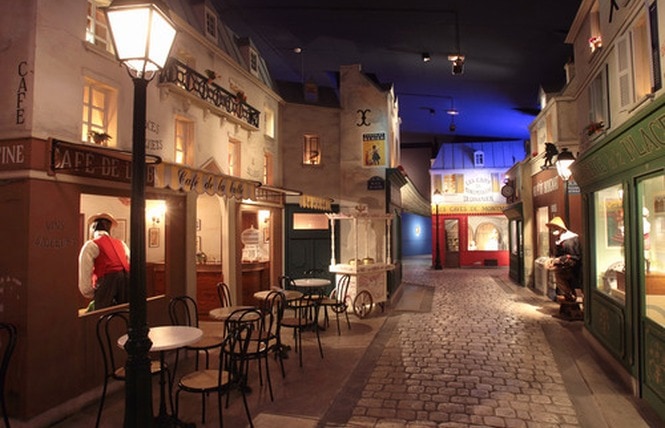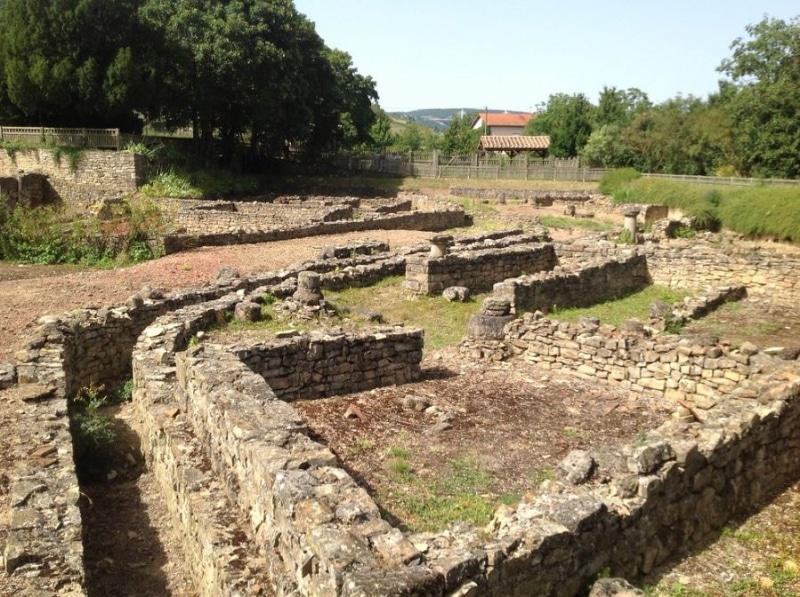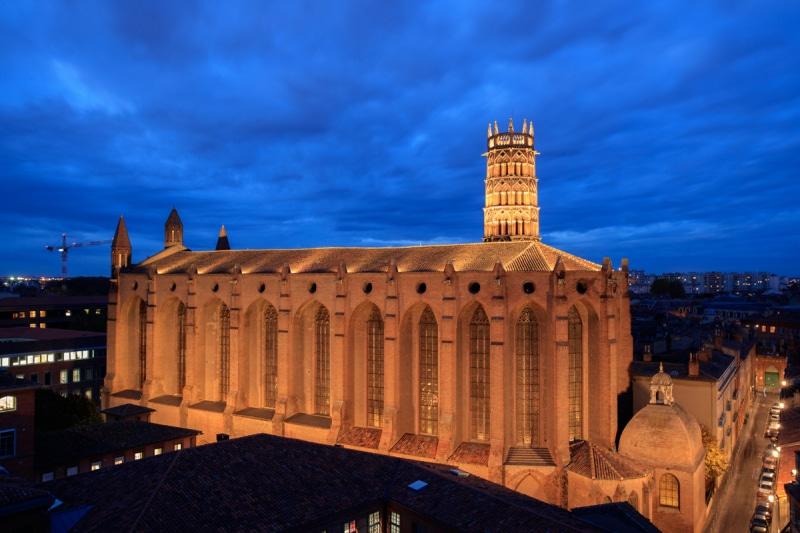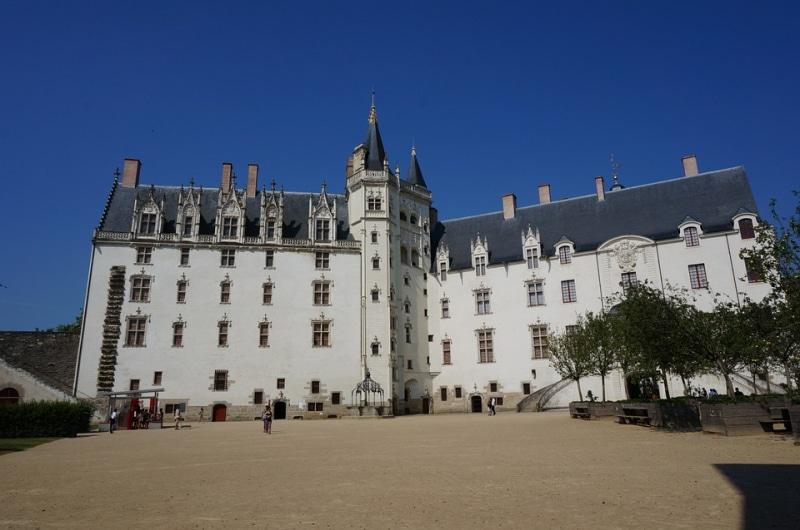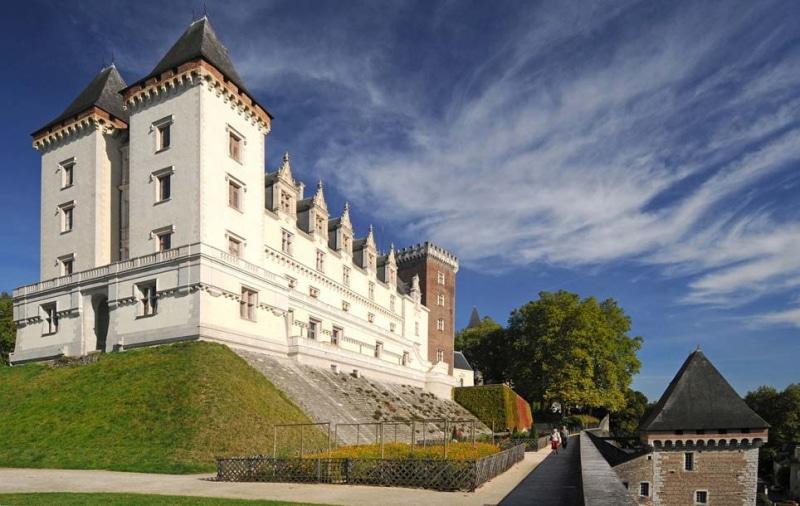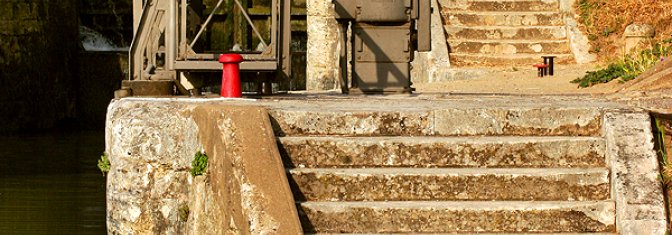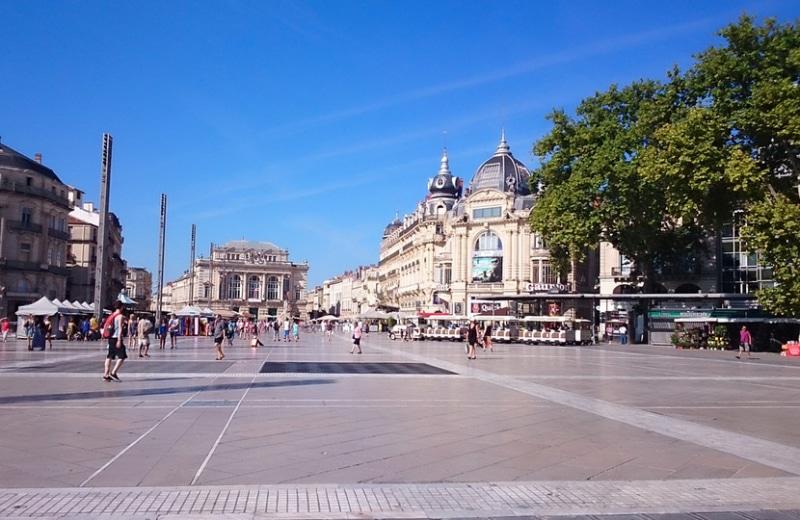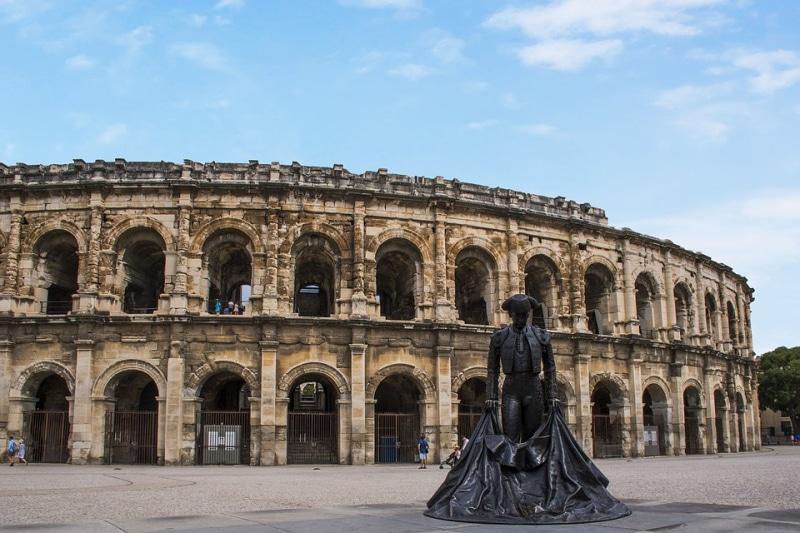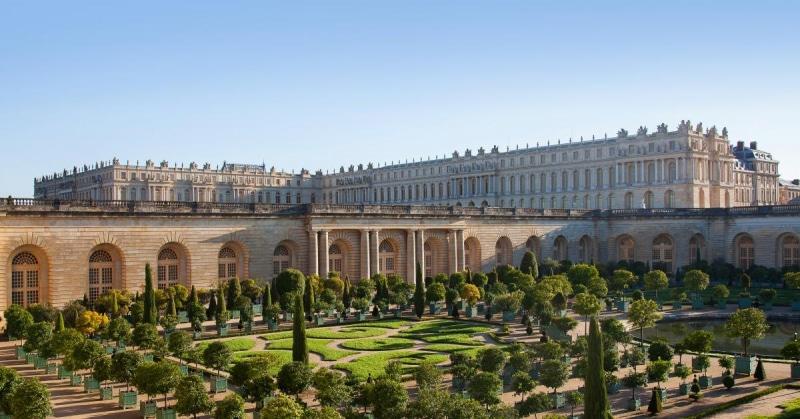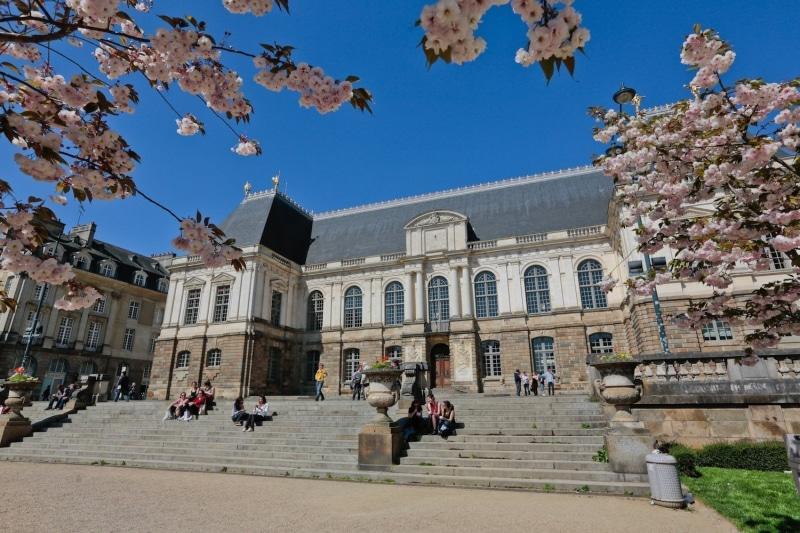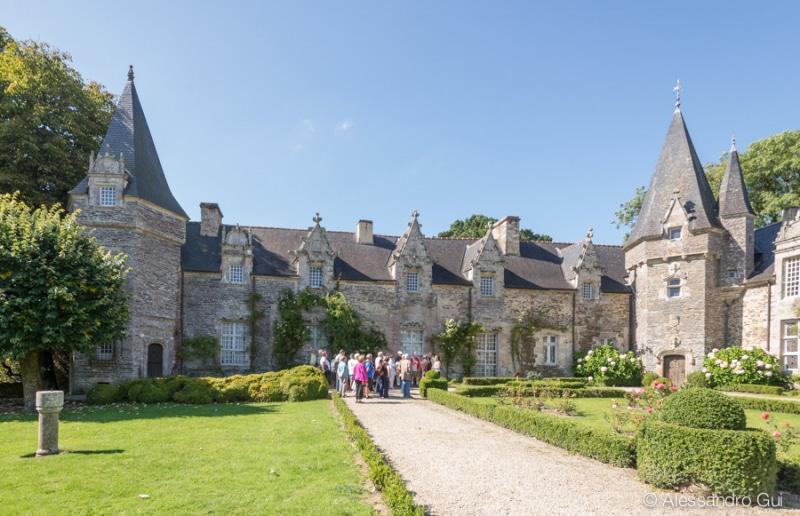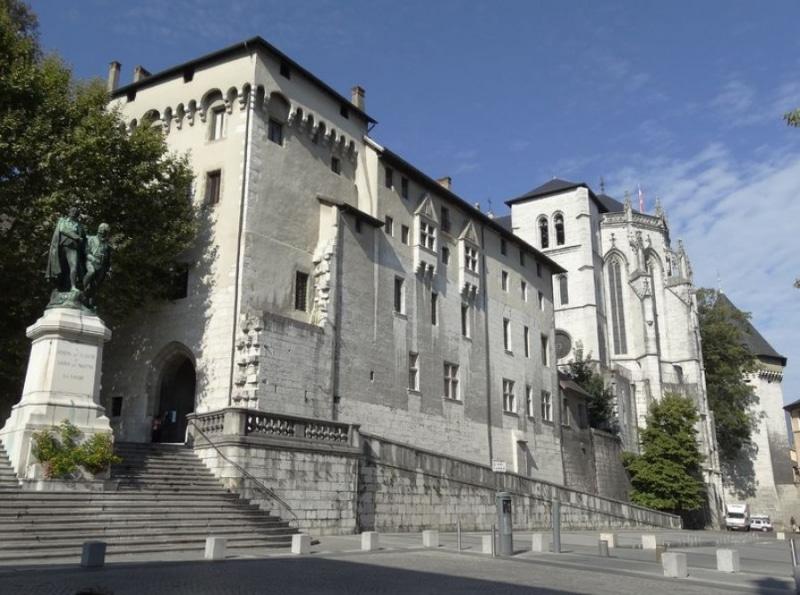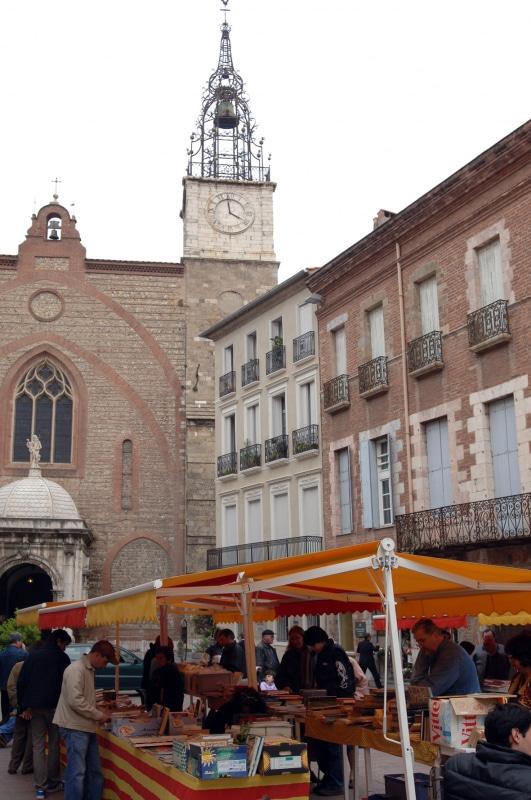HistoricalSites, Limoges
Removed from Unnamed collection
The Central Market Hall
Limoges's central market hall was built between 1885 and 1889. It is a remarkable example of 19th century architecture. The metal framework's triangular shapes each weigh 14 tonnes. It was designed by two engineers, who studied the Eiffel technique: Levesque (who spent a long time working with the manager of the Eiffel-Seyrig studies) and Pesce. http://www.limoges-tourisme.com/en/What-to-see/Monuments/(fiche)/the-central-market-hall-191000045-1714dde
Map
Explore more places related to this search:
Removed from Unnamed collection
The Donjon de Gouzon
The Donjon de Gouzon houses a space of Industrial Archeology on 4 levels.
This dungeon of the twelfth century. and thirteenth century, restored houses a museum space on four levels.
The vertical movement is ensured by an elevator (public commission of the Delegation to the Visual Arts), work of the architect designer Sylvain Dubuisson. http://uk.poitiers-tourism.com/espace-d-archeologie-industrielle-du-donjon-de-gouzon-a-chauvigny/chauvigny/tabid/29114/offreid/da3eed0d-9a89-476f-b401-069943cf12e5/detail.aspx
Map
Removed from Unnamed collection
The Abbey of Fontaine
Founded around 1130 by William VIII, Count of Poitou-duke of Aquitaine, the Abbey of Fontaine the Count first hosted a community of canons of St. Augustine. http://uk.poitiers-tourism.com/ancienne-abbaye-de-fontaine-le-comte/fontaine-le-comte/tabid/29111/offreid/fd222a4d-b360-4cc8-9308-539c70d38efd/detail.aspx
Map
Removed from Unnamed collection
Notre-Dame-du-Port
Listed on UNESCO’s World Heritage, the Notre-Dame-du-Port Basilica takes visitors into the spellbinding world of Romanesque art. The basilica was built of beige arkose during the first third of the 12th century. It was fully restored ending December 2008. http://www.clermontferrandtourism.com/discovery/main-sites/notre-dame-du-port/
Map
Removed from Unnamed collection
The Donjon de Vez
This imposing medieval fortress dating from Gallo-Roman times was the royal House of Valois's capital for five hundred years. http://www.donjondevez.com/en/le-donjon/
Map
Removed from Unnamed collection
Castle of Coudray Salbart
The castle Coudray-Salbart is one of the most famous fortresses of medieval France and its high towers still dominate the Sèvre Niortaise. http://www.chateau-fort-manoir-chateau.eu/chateaux-deux-sevres-chateau-echire-chateau-fort-coudray.html
Map
Removed from Unnamed collection
Jacques Coeur Palace
Born in Bourges some time around the year 1400, Jacques Coeur rapidly rose to the top of the social ladder. After his appointment as Finance Minister to the King and being made a nobleman, he began the construction of his Palace, which was finished around 1450.
This monument was unique in France for its time but illustrates well the original personality of its builder. It is a precursor of the mansions of the Renaissance period: the large main building is constructed against the Gallo-Roman wall. The galleries running around the courtyard link it to the chapel over the main doorway.
The façade on the street side and that of the main building are beautifully decorated with Jacques Coeur's royal emblem, together with a multitude of sculptures portraying religious themes, Jacques Coeur's travels or scenes of everyday life. http://www.ville-bourges.fr/_en/site/heritage_jacques-coeur-palace
Map
Removed from Unnamed collection
The Cite du Vin
Since June 1, 2016, Bordeaux has a contemporary monument, which illustrates the city's dedication to the fruit of the vine: La Cité du Vin.The purpose of this museum is to create a space where sensory experiences are centered wholly around wine. This site is fully dedicated to this "nectar," as a living piece of French history and culture http://au.france.fr/en/discover/visit-cite-vin-bordeaux-0
Map
Removed from Unnamed collection
Place de la Bourse
Place de la Bourse has symbolised the city of Bordeaux around the world for centuries and played a major role in the city's development, trade, and reputation. Both the Bordelais and visitors alike adore this very elegant square.
It took 20 years of hard work in the 18th century to build what has since become the city's very symbol! The square represents a break with medieval Bordeaux surrounded by walls for centuries. The city was finally free to grow!
Intendant Boucher had tried to convince the town aldermen and the parliament to create the square and open up the city walls since 1720. He decided to entrust Jacques Gabriel, Louis XV's "First Architect" with designing this rectangular square with bevelled corners, as well as constructing the famous buildings decorated with mascarons and wrought iron.
The buildings framing this place royale consist of the Hôtel des Fermes, built by Gabriel's father, followed by the Hôtel de la Bourse built by Gabriel himself, and the isolated central pavilion (1735-1755). Place de la Bourse was originally separated from the river by railings, but these disappeared during the French Revolution. The equestrian statue of the king was briefly replaced by one of Napoleon, followed by the Fountain of the Three Graces in 1869… https://www.bordeaux-tourism.co.uk/offre/fiche/place-de-la-bourse/PCUAQU033FS00043
Map
Removed from Unnamed collection
Porte Cailhau
Imbued with a long history, the Porte Cailhau offers a magnificent view of Bordeaux. Despite its age (just imagine – it dates from 1494!) this large, beautiful monument remains practically unchanged. It was built to commemorate Charles VIII's victory at Fornovo (Italy). This French king has left his mark on the tower since his likeness decorates a niche on the river side and a notice ask visitors to pay attention to the lintel and reminds them that Charles VIII died from walking quickly into just such a lintel...
The Port Cailhau, thirty-five metres tall, was integrated into the city walls. In 1864, it was rented by a public letter writer and a person whose job was to weigh salt. They were both evicted in order to renovate the monument. There is a magnificent view of the oldest bridge in Bordeaux, the Pont de Pierre, from here.
An exhibition displays the tools and materials used for construction purposes at the time the Porte Cailhau was built and an audio-visual presentation pieced together from old films immerses us in the world of stone masonry. https://www.bordeaux-tourism.co.uk/offre/fiche/porte-cailhau/PCUAQU033FS00044
Map
Removed from Unnamed collection
The Tower of Pey-Berland
Situated to the south-east of the chevet of the Cathedral of Saint-André at Bordeaux, the tower of Pey-Berland serves as its bell tower, built in the 15th century in the Gothic style. http://au.france.fr/en/discover/tower-pey-berland-bordeaux-0
Map
Removed from Unnamed collection
Saint Jean Dangle Fort Castle
The fairy castle Mélusine
Family go for 3h visit at the time of the knights! Upon your arrival, dress up for free and start exploring the castle through a new puzzle route for children and a quiz for the older ones. http://www.holidays-la-rochelle.co.uk/what-to-see-and-do/discover-la-rochelle/monuments-to-visit/1053557-chateau-fort-saint-jean-dangle
Map
Removed from Unnamed collection
Musee Des Automates Et Modeles Reduits
More than 300 automated models of famous people, historic scenes of life in La Rochelle and animated display cases to enchant both old and young visitors alike. . Your visit will also take you to a reconstruction of Montmartre with its 1900s atmosphere with artists, musicians http://www.holidays-la-rochelle.co.uk/what-to-see-and-do/discover-la-rochelle/monuments-to-visit/123305-musee-des-automates-et-modeles-reduits
Map
Removed from Unnamed collection
La Graufesenque
In the 1st century AD, for two centuries, more than 600 potters produced the red, shiny sigillated ceramics, distributed throughout the Roman Empire. The remains of workshops, ovens, residential houses, sanctuary bear witness to this.
Historical presentation. The circuit on the site. Visit a part of the village of Gallo-Roman potters with a view of sanctuaries, baking ovens, workshops and residential houses. The visit lasts on average one hour. https://www.tourisme-aveyron.com/fr/diffusio/patrimoine-culturel-visites/site-archeologique-de-la-graufesenque-millau_TFO18803277837
Map
Removed from Unnamed collection
Couvent Des Jacobins
In this building entirely made of bricks, the contrast between its massive or even austere aspect of the exterior and the extraordinary lightness of the interior architecture where the famous palm-tree ribs thrust upwards. http://www.toulouse-visit.com/offre/fiche/patrimoine-culturel/couvent-des-jacobins/PCUMID031FS0009F
Map
Removed from Unnamed collection
The Chateau des ducs de Bretagne
In the heart of the medieval quarter, the Château des ducs de Bretagne welcomes the Nantes Museum of History, whose scenography offers a walking tour punctuated with 1 150 objects as well as interactive multimedia displays that are aesthetic, fun, and educational. https://www.nantes-tourisme.com/en/heritage/chateau-des-ducs-de-bretagne-musee-d-histoire-de-nantes
Map
Removed from Unnamed collection
Lyon Gallo-Roman Civilisation Museum
The Museum of Gallo-Roman Civilisation astounds the visitor with its avant-garde architecture and carefully-chosen exhibits, nudging you to uncover more of what Lyon’s Roman, Gaul and Celtic forebears got up to.
Facing the rising sun and the Alps, way up over the Confluence of Rhône and Saône, the Museum of Gallo-Roman Civilisation chronicles five centuries of the city’s history under Rome when Lyon was known as the dazzling capital Lugdunum. Dug deep inside Fourvière hill in the 5th district of Lyon, with its two huge windows overlooking its neighbouring Amphitheatre and Odeon, the Gallo-Roman Museum of Lyon is akin to a submarine, set to journey through the undergrowth and vestiges of this ancient civilisation.
Step on-board and be subtly wowed by polychrome mosaics, the sarcophagus of the triumph of Bacchus, the unique Gallic Coligny calendar, a plan-relied of the ancient town, a rare circus mosaic, not to mention the Tabla Claudiana, reproducing a speech by the emperor Claudius, all set inside an avant-garde architectural experience whipped up by Bernard Zehrfuss. https://thisislyon.fr/things-to-do/museums/museum-gallo-roman-civilisation/
Map
Removed from Unnamed collection
Basilica of Notre-Dame de Fourviere
The Basilica of Notre-Dame de Fourvière is a vital part of the Lyon cityscape and you’d be a fool not to go up there. Mr Mayor, Gérard Collomb, even calls it a “treasure of humanity”. With one of the best views over the entire city, it understandably draws in busloads, who all load off to celebrate Mary and the paraphernalia of Christianity.
Then you have those who hike up there for a brisk morning walk to lord it over the panoramic view and feel regal.
The beautiful white Basilica of Notre-Dame de Fourviere, known by locals as the upside-down elephant, sits on the top of Fourvière hill, aka the ‘praying hill’, in Lyon’s 5th district, where the world of Catholics rubs shoulders with vestiges of Ancient Rome.
From its dominant position, looming over the city below with vantage points aplenty, Fourvière has become a symbol of Lyon, attracting over 2 million visitors annually. Designed by Pierre Bossan, Fourvière basilica draws from both Romanesque and Byzantine architecture, two non-Gothic models that were unusual choices at the time. It’s actually one church on top of another. https://thisislyon.fr/things-to-do/historical-monuments/basilica-notre-dame-de-fourviere-treasure-lyon/
Map
Removed from Unnamed collection
Place des Terreaux
Place des Terreaux was once a huge bog, believe it or not. Today, the famous Lyonnais landmark deserves a visit, either as a starting point to explore the presqu’île and the City Hall area, or as a beautifully-constructed square to while away the hours.
Place des Terreaux is a famous Lyonnais square, grand and grey. It’s a perfect rectangle in fact, located in the 1st district of Lyon inside the peninsular or ‘presqu’île’ between the Rhône and Saône rivers, at the foot of the Croix-Rousse hill. It’s a Lyon landmark and a UNESCO heritage site, the place to meet, inside which you can sip beer in the outdoor cafés, perch on the steps of the Fine Arts Museum and observe the Bartholdi fountain, or pop into the beautiful City Hall to pay new mayor Mr Képénikian a visit. https://thisislyon.fr/things-to-do/historical-monuments/place-des-terreaux-and-hotel-de-ville/
Map
Removed from Unnamed collection
The Midi Canal
The work of Pierre-Paul Riquet carried out in the 17th century to link the Atlantic to the Mediterranean, the Midi Canal has been listed as a UNESCO world heritage since 1996. http://www.tourism-carcassonne.co.uk/detail/007a1d2be4f167c8e8cdfe8407287873/462861
Map
Removed from Unnamed collection
National Museum of the Chateau de Pau
Restored in the 19th century and classified National Museum, it presents 1000 years of history and offers visitors a rich decorative ensemble, as well as an impressive collection of Gobelins tapestries from the 16th to the 19th century. http://www.pau-pyrenees.com/home/notre-patrimoine/une-touche-de-culture/musee-national-du-chateau-de-pau
Map
Removed from Unnamed collection
Boujan-sur-Libron
Probably built on the site of an ancient Roman villa, constant attacks led to the fortification of the village in a circular form. http://uk.beziers-mediterranee.com/beziers-uk/principal-uk/discover/countryside-and-vineyards/boujan-sur-libron
Map
Removed from Unnamed collection
Canal du Midi
Ranking World Heritage of Humanity by UNESCO December 7, 1996 has given a soul to one of the oldest still operating channels, now dedicated to tourism. Built during the reign of Louis XIV, from 1667 to 1681, called the Royal Canal to the French Revolution, a distance of 240 km. Large 20 to 24 m, 2 m deep on average, there are 69 locks and 350 works spanning his course and facilitate its airworthiness. http://uk.beziers-mediterranee.com/discover/the-canal-du-midi
Map
Removed from Unnamed collection
Place de la Comedie
Place de la Comédie is Montpellier's central square. Also known as l'OEuf (the Egg) because of its original oval shape, it is one of the largest pedestrian areas in Europe. http://www.montpellier-france.com/offre/fiche/place-de-la-comedie/PCULAR034V50LIGI
Map
Removed from Unnamed collection
The Roman Arena
The Roman amphitheatre (or arena) in Nîmes is the best-conserved of the Roman world. It was used for hunting wild animals and for gladiator combats from the end of the first century AD onwards. Many events are held there today. http://www.ot-nimes.fr/index.php?id=40&L=1
Map
Removed from Unnamed collection
The Palace of Versailles
The history of the Palace of Versailles starts at the 17th century. It was first a hunting lodge, then a seat of power, and finally, from the 19th century onwards, a museum. Composed of the Palace, the gardens, the Park, the Trianon estate and several buildings in town, today the Estate of Versailles spreads over more than 800 hectares. http://en.chateauversailles.fr/discover/estate
Versailles
Map
Removed from Unnamed collection
The Parliament of Brittany
Major architectural work of the seventeenth century, the Parliament of Brittany is now one of the few places in France where justice and tourism coexist with guided visits https://www.tourisme-rennes.com/en/focus-on/the-parliament-of-brittany
Map
Removed from Unnamed collection
The Petit Trianon
In 1758 Louis XV decided to build a new château in the middle of his gardens, which he had been working on for more than a decade. He commissioned royal architect Ange-Jacques Gabriel to build a new royal residence large enough to house the king and some of his entourage. http://en.chateauversailles.fr/discover/estate/estate-trianon/petit-trianon
Versailles
Map
Removed from Unnamed collection
Chapelle Notre-Dame De Bon Secours
Listed on the Historical Monuments, the chapel was founded in the fiftteenth century by Bertrand de Quifistre, Lord Trémohar, owner of the nearby castle with the same name. It has beautiful wall paintings from the sixteenth century. https://www.rochefortenterre-tourisme.bzh/ln/en/discover/heritage-museums/built-heritage/?tif_r=38ea6a64-1640-4b26-82ca-a880d4e0b6c1&Chapelle-Notre-Dame-de-Bon-Secours
Removed from Unnamed collection
Parc Du Chateau De Rochefort-En-Terre
The castle built on the site of a mediaeval fortress was the residence of two American Francophiles painters, Alfred and Trafford Klots. Paintings collections. https://www.rochefortenterre-tourisme.bzh/ln/en/discover/heritage-museums/built-heritage/?tif_r=4de3e247-2ee9-434c-a972-4bf10948c8c3&Parc-du-Chateau-de-Rochefort-en-Terre
Removed from Unnamed collection
The Saint Benezet bridge
The Saint Bénezet bridge, a major witness of the history of Avignon, is known throughout the world thanks to the famous song. Built from the 12th century, it was washed away several times by the floods of the Rhone, and finally abandoned in the seventeenth century. Classified World Heritage by UNESCO. http://www.avignon-tourisme.com/Monuments-et-Patrimoine-culturel/AVIGNON/fiche-4615600-2.html
Map
Removed from Unnamed collection
The Palace of Pops
Avignon has a magnficent urban landscape. The Rocher des Doms overlooks the city and the Rhône. Here there is an exceptional architectural group which includes the Pont d'Avignon (also known as Pont Saint Bénezet, the Ramparts, the Petit Palais, the Doms Cathedral and the massive walls of the Palace of the Popes, with four impressive towers in each corner. This unique architectural ensemble has been ranked as a UNESCO World Heritage site. The biggest Gothic palace in the world: tour 24 rooms! Museum space, priceless frescoes. Audioguide in 11 languages http://www.avignon-tourisme.com/Monuments-et-Patrimoine-culturel/AVIGNON/fiche-4615596-2.html
Map
Removed from Unnamed collection
Chateau des Ducs de Savoie
This former residence of the Ducs de Savoie is currently the seat of the Préfecture et du Département de la Savoie. http://www.chambery-tourisme.com/noesit/!/fiche/castello-dei-duchi-di-savoia-604770
Map
Removed from Unnamed collection
The Sant Jordi
One of the legends attributed to Sant Jordi, which rapidly became the most famous, tells of a dragon who scared the inhabitants of a city. To calm it down, a lamb and a young girl chosen at random had to be offered every day. http://www.perpignantourisme.com/gb/decouvrir/perpignan-catalane/sant-jordi-et-sant-joan#sthash.x611XTzR.dpbs
Map



